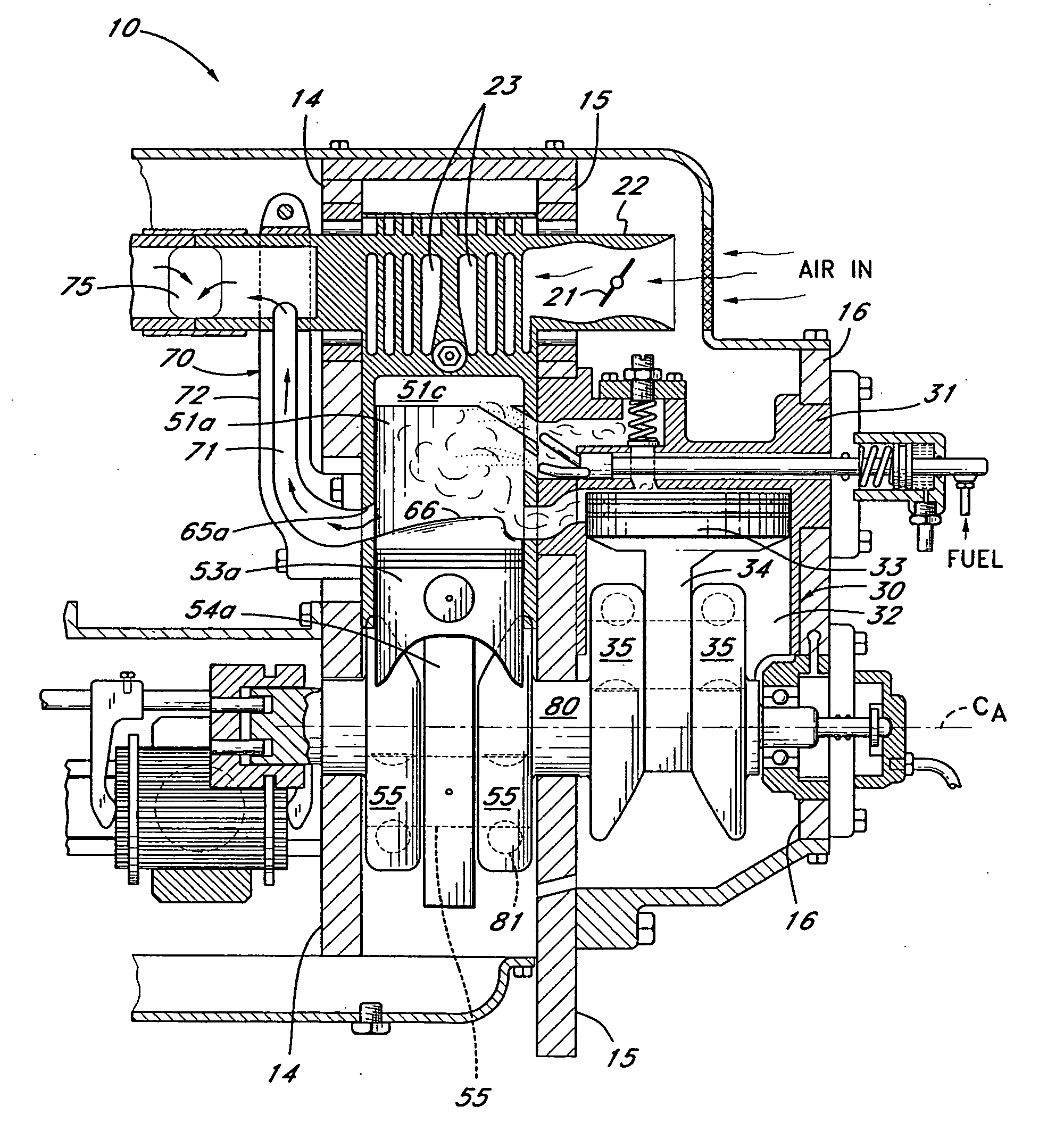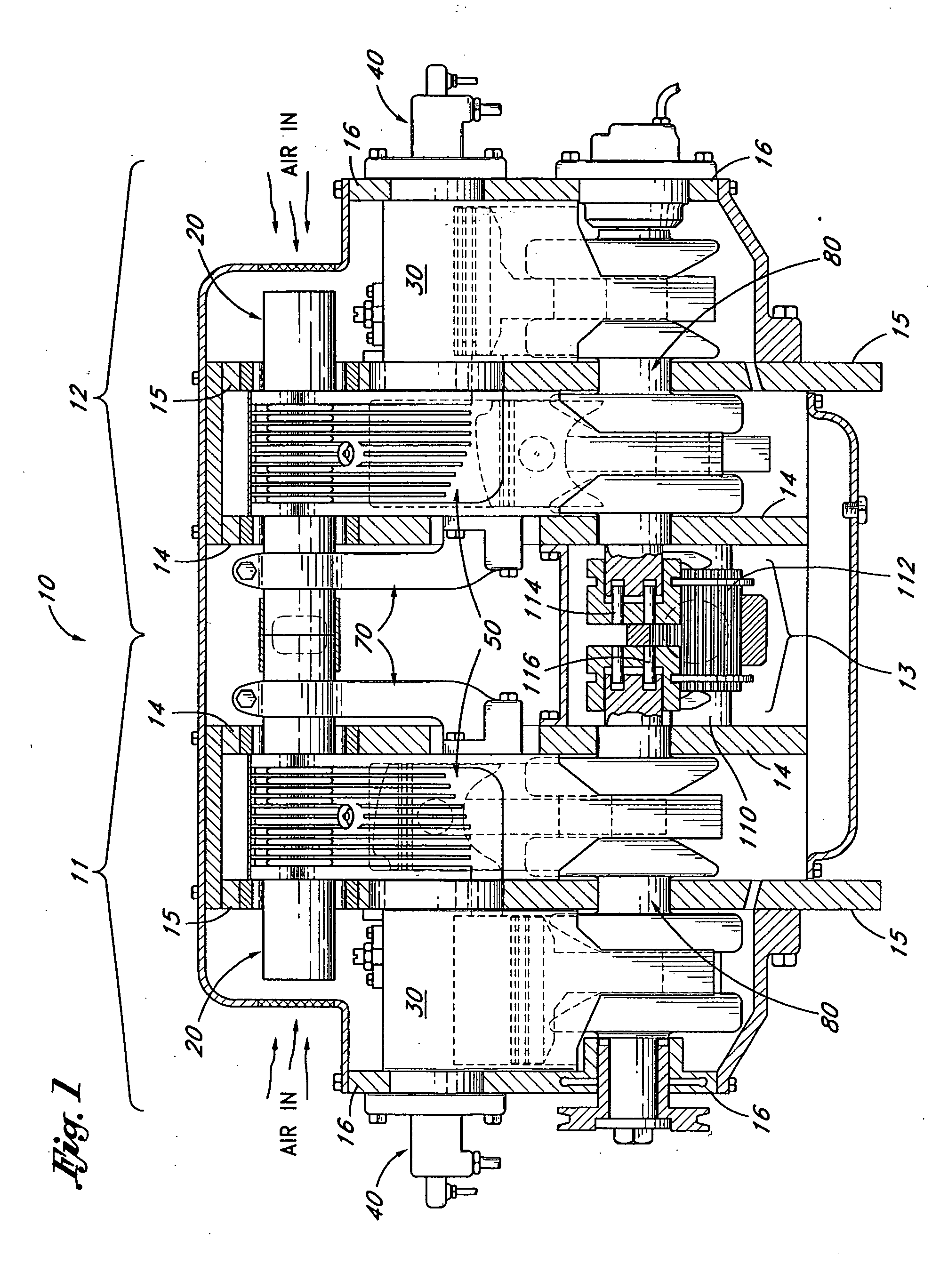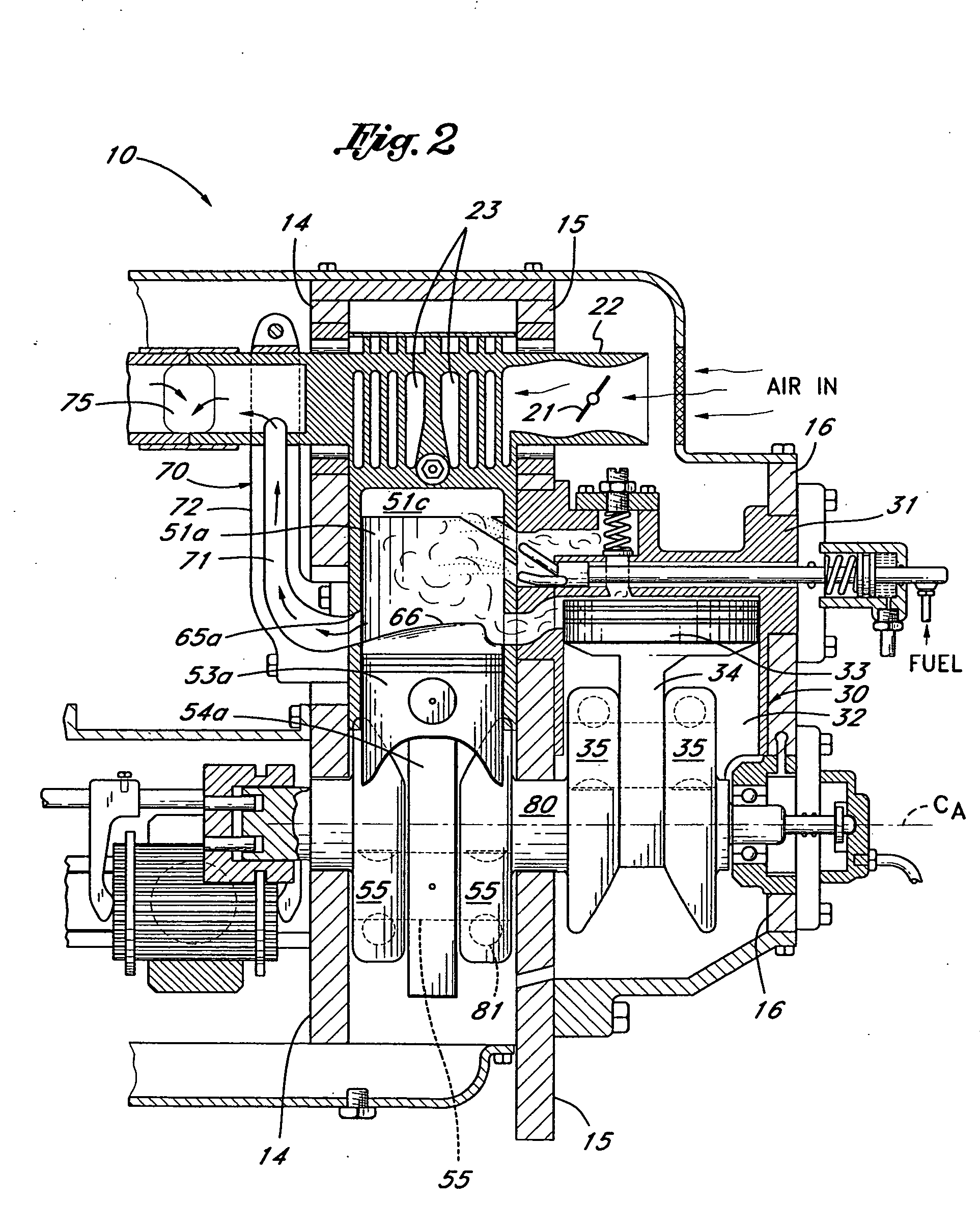Internal combustion engine with actuating oscillating cylinders
a technology of oscillating cylinders and internal combustion engines, which is applied in the direction of internal combustion piston engines, combustion engines, machines/engines, etc., can solve the problems of reducing engine efficiency, -stroke engines, and generally not as efficient two-stroke engines, so as to facilitate reciprocation of pistons, enhance efficiency, and accelerate exhaust exchange
- Summary
- Abstract
- Description
- Claims
- Application Information
AI Technical Summary
Benefits of technology
Problems solved by technology
Method used
Image
Examples
Embodiment Construction
[0048] Reference is now made to the figures wherein like parts are designated with like numerals throughout. While the accompanying figures show the improved engine oriented vertically, i.e., the pistons moving up and down, it should be readily appreciated that the present invention may be oriented for operation in many directions. For purposes of describing and claiming the present invention on a mare general level, pistons will be described as moving inward and outward away from the head of a cylinder, rather than downward or upward, as specifically shown in the figures.
[0049] With reference to FIG. 1 and by way of broad introduction, the improved engine 10 comprises an air intake system 20 that draws fresh air into the engine 10. This air is first used to draw heat away from the combustion portion of the engine and then is delivered to an air cylinder 30 (or air cylinder, for short), for compression. The compressed air is, in part, mixed with fuel from a fuel delivery system 40 ...
PUM
 Login to View More
Login to View More Abstract
Description
Claims
Application Information
 Login to View More
Login to View More - R&D
- Intellectual Property
- Life Sciences
- Materials
- Tech Scout
- Unparalleled Data Quality
- Higher Quality Content
- 60% Fewer Hallucinations
Browse by: Latest US Patents, China's latest patents, Technical Efficacy Thesaurus, Application Domain, Technology Topic, Popular Technical Reports.
© 2025 PatSnap. All rights reserved.Legal|Privacy policy|Modern Slavery Act Transparency Statement|Sitemap|About US| Contact US: help@patsnap.com



